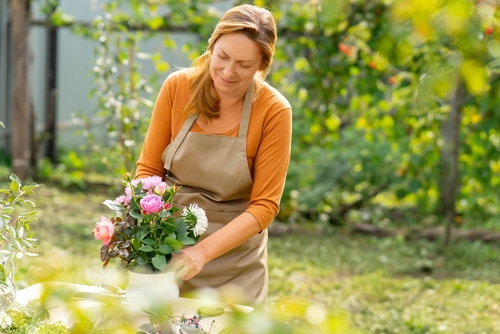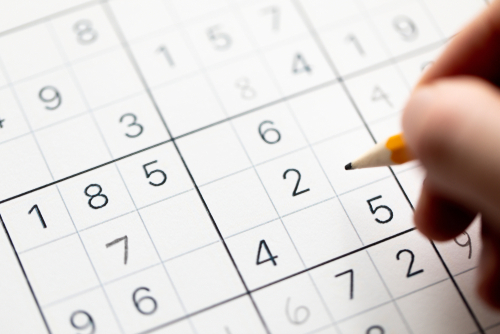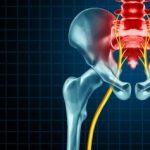Most of us are very busy people. So busy, that it is difficult for us to find leisure – time for enjoyable pursuits that contribute to our sense of well-being.
Why is it so important to have leisure, and how do we find the right occupation when there is a chronic illness in the background?
Here is the leisure guide for people with multiple sclerosis.
So why is it so important?
Leisure is free time in which we choose to engage in activities that benefit us. It is important that leisure be a part of our lives in order to enable balance, well-being and a better quality of life. Leisure promotes health and personal development, and at the same time inhibits withdrawal in certain areas. People who engage in leisure activities, which require physical effort and enjoyable leisure in general, suffer less from apathy and depression. It was also found that the level of thinking, the sense of ability (self-efficacy) and the quality of life (physical and mental) of these people are higher 1 .
The art of adjusting leisure activity in multiple sclerosis and in general
Many are familiar with the phenomenon in which the child experiences each time in a different class – not always in one class. Children tend to experiment with many activities and learn to recognize their tendencies (sports, dancing, painting), but in adult life it is better to focus on individual leisure activities, since energy and time resources are limited every day.
Adapting a leisure activity to an adult is an art in itself and requires thinking and basing on previous knowledge. All the more so for people with multiple sclerosis. It is recommended for them to put double thought into every activity, even in leisure activities, since fatigue is a major symptom that affects both physical activity and cognitive activity. Weakness is also a common symptom, so it is important to choose adapted leisure activities 1 .

choose adapted leisure activities
Ask yourself:
-
What will give me pleasure, but also challenge me to the right degree?
-
What will motivate me to persevere?
-
What will make me continue to learn, grow and develop?
-
What will preserve my existing abilities?
The way of elimination can also help through awareness of limitations and difficulties:
-
What in no way suits me?
-
What is too hard?
-
What is not fun for me and will cause frustration?
-
What will tire me?
-
What will I pay an excessively heavy price for that won’t pay off for me?
Leisure can be classified into 6 categories:
-
Physical.
-
Social.
-
Personal (individual).
-
Cultural-artistic.
-
Educational-didactic-cognitive.
-
Spiritual-religious.
* See details below
Leisure classification according to the location of the activity
In addition, it can also be classified according to the location of the activity: home leisure and outdoor leisure, as well as according to the level of activity: passive / active occupation.
In choosing a leisure activity, other important factors intervene: the availability of the activity, the cost, the ability to perform the activity in a way that suits me (in terms of physical abilities, or time of day) and the ability to move outside the home 2.
Leisure areas that are mainly relevant for people with multiple sclerosis
Social gatherings
Social gatherings – social leisure involves meeting and communicating with other people (such as the weekly ‘parliament’ in cafes or a community in the synagogue). This type of leisure has been found in studies to be the most important factor in preserving cognitive abilities. The ability to listen, keep information in memory, think about the information and manipulate it with thought, plan a response, respond at the right time to a question, quibble, argue, answer, improvise and more. All these and more preserve the flexibility of thinking, while maintaining the stability of the goal (the topic of the conversation). This is an activity that is often available, at a relatively low cost (a cup of coffee, a bus or taxi ride) and does not require significant physical effort.
Physical activity
Physical activity – adapted physical activity, starting with a private fitness instructor (high cost), through a subscription at the local country club / gym, and ending with independent practice at home, in front of the computer screen or brisk walking outside (free), is another highly recommended leisure activity. When physical activity is graded and adapted to the patient, it contributes to physical and mental health, and even improves the ability to think.
Cognition

Cognition – it is now known that multiple sclerosis can cause cognitive decline and this will directly and indirectly affect employment, social life and quality of life 3 . Because of the high importance of maintaining cognitive ability, it is recommended to invest about 30 minutes a day in an intensive thinking activity such as Sudoku, a challenging crossword or reading. It must be taken into account that an activity performed quickly and easily, without effort and challenge, contributes less to the brain than learning a new skill – for example, learning a new language, learning to play a musical instrument, or deepening and researching a new subject (for example, learning about a country to which you are flying). You can listen to lectures on YouTube or podcasts (podcasts) on a variety of topics on many dedicated websites such as: Spotify or Podcaster. There are also many sites on the net that offer a “brain gym” for a fee, with the advantage being progress at a personal pace, in the comfort of your home. Example sites: Brain HQ, Lumosity, Happy Neuron.
Apps for cognitive training
Another option for cognitive training is the use of free apps available on every smart phone / tablet. These are games that require thinking (attention, memory, etc.) and are usually graded and allow an easy start and moderate progress to challenging stages. For your use a number of recommended apps (widely used):
Games that require thinking, planning ability, memory, control:
Flow Free, Buttons and Scissors, Lyfoes, Memory Match Game, Unblock Me, Set
Games that require punctuality, information processing speed and reaction time:
Tetris , Cut the Rope, Fruit Ninja, Bubbles
General leisure (don’t forget the fun element!):
Mahjong, Sudoku, bulk, word cake, my crossword, Na stroke in Hebrew
Leisure activities
Here are common leisure activities, arranged according to their scope, location and cost. Try to check where your leisure activity is located in the following tables and if there isn’t one… go ahead! There is no time, there is leisure!
Inside the Home
physical
$ – Independent practice according to videos on the Internet (yoga, Pilates)
$$ – Private fitness trainer
social
$ – meeting friends/family, social networks
$$ – hosting workshops, lectures or political meetings
personal
$ – crossword, reading, drawing, gardening
$$ – private trainer, online album design
Outdoors
physical
$ – going for a walk
$$ – gym, sports class
Social
$ – participation in a support group, interest group (birdwatching, politics)
$$ – ‘Parliament’, circle
Personal
$ – nature trip
$$ – shopping
Inside the Home
Cultural-artistic
$ – creating, playing, listening to music, virtual tours in museums
Educational-didactic-cognitive
$ – playing a board game or in an app, listening to lectures on the Internet
$$ – “gym” software for the brain
Spiritual-religious
$ – reading books, listening to lessons online
Outdoors
Cultural-artistic
$ – street exhibitions
$$ – museums, plays
Educational-didactic-cognitive
$ – participation in a support group, interest group (birdwatching, politics)
$$ – ‘Parliament’, circle
Spiritual-religious
$ – visiting lessons, participating in the classes
$$ – meditation with a guide
Try and enjoy!
The author: Adina Sharid, Ms.C, occupational therapist
Sources:
- Vanner et al. Disability and Health Journal. 2008;1:58–65
- Hosseini et al. Health Promotion Perspective. 2016;6:47–53
- Ben Ari et al. 2013. Multiple Sclerosis Rehabilitation. 161–189
Video: “Rehabilitation of the patients with Multiple Sclerosis”
For additional information about Rehabilitation of the patients with Multiple Sclerosis you can watch a video demonstrating exercises and rehabilitation recommendations.

Check out the demo version of our sets of exercises for Multiple Sclerosis on YouTube
You can find more information about Multiple Sclerosis in our Library of Articles.
Our website presents the following sets of exercises for the rehabilitation of the patients with Multiple Sclerosis:
-
MULTIPLE SCLEROSIS. EXERCISES FOR STRETCHING AND IMPROVING BODY FLEXIBILITY AND JOINT MOBILITY, REDUCING TONE
-
MULTIPLE SCLEROSIS. EXERCISES TO STRENGTHEN THE MUSCULOSKELETAL AND MUSCULAR SYSTEM, ENDURANCE
-
MULTIPLE SCLEROSIS. EXERCISES TO IMPROVE COORDINATION, BALANCE AND GAIT
-
MULTIPLE SCLEROSIS. STRETCHING AND WORKING WITH A MASSAGE ROLLER. ADVANCED STAGE OF REHABILITATION



